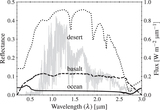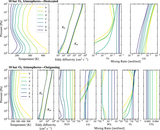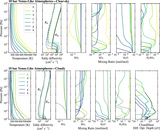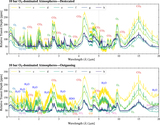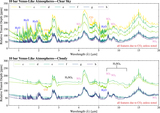Image Details
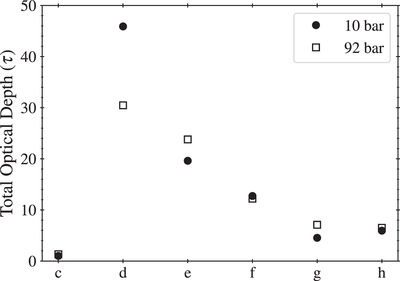
Caption: Figure 7.
Sulfuric acid cloud total optical depths for each cloudy Venus atmosphere. TRAPPIST-1 b did not condense sulfuric acid in our models. TRAPPIST-1 c maintained only thin clouds, because sulfuric acid absorption warms the cloud layer and the local warming can cause the clouds to evaporate. Optical depths peak for planet d, which has vigorous sulfuric acid formation and has lower surface gravity, so it can more easily loft aerosols. The planets generally decline in optical depth with distance from the star due to lower photolysis rates and, for the 10 bar atmospheres, the lower abundance of water vapor. Note the 92 bar atmosphere photochemistry and cloud formation were truncated at 10 bar. Planets f, g, and h had cloud formation to 10 bar and so could also form thicker clouds deeper toward the surface.
Copyright and Terms & Conditions
© 2018. The American Astronomical Society.


